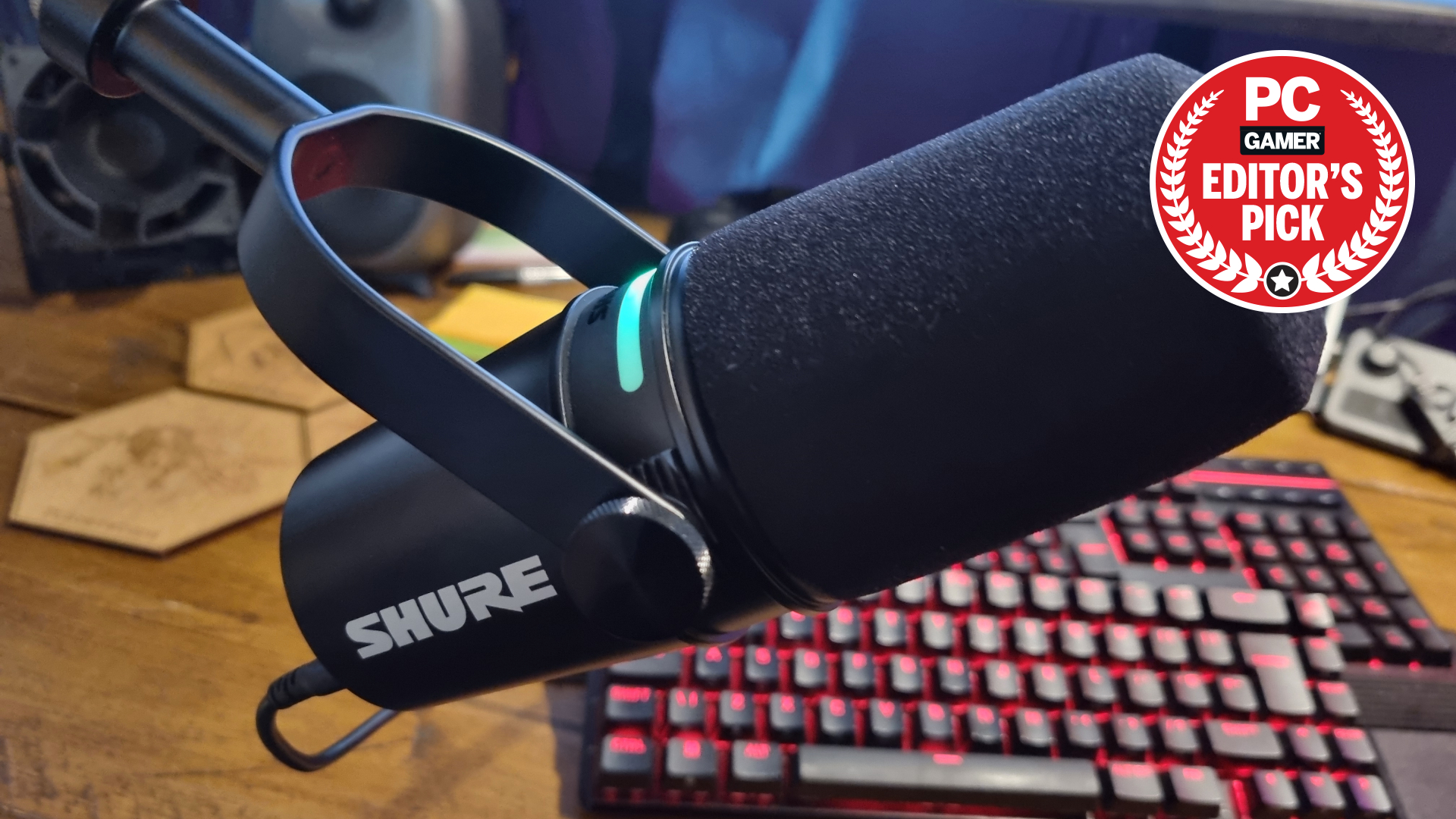
When I found out Shure was discontinuing the Shure MV7 Podcast microphone, I felt a genuine twinge in my stomach. Y'see, I've been using two of the big beasties for vocal audio capture for years, and they've become like old friends. Slightly unwieldy perhaps, but as plug and play microphones, they were unparalleled.
It wasn't just me that thought so, either—until recently, the Shure MV7 topped our best microphone for gaming guide, only to be replaced by the excellent Shure MV6, thanks to its more gamer-friendly sizing and desktop placement options. Now the Shure MV7+ is here, and at first glance not a whole lot seems to have changed.
That's until you put it side by side with the original MV7. The MV7+ is longer, thanks to a more substantial foam filter. The slightly fiddly touch panel controls are also now reduced to a single LED strip acting as a touch to mute button by default. Other than that though, the Shure MV7+ looks and feels just as good as the original did.
It'd better feel like the bee's knees, given the price. You can get a lot of great gaming microphones for under the $200 mark, but Shure will sell you an MV7+ for $279/£269. That's chump change for studio grade vocal mics, but for your average buyer that's still a lot to pay for something that really only does one job.
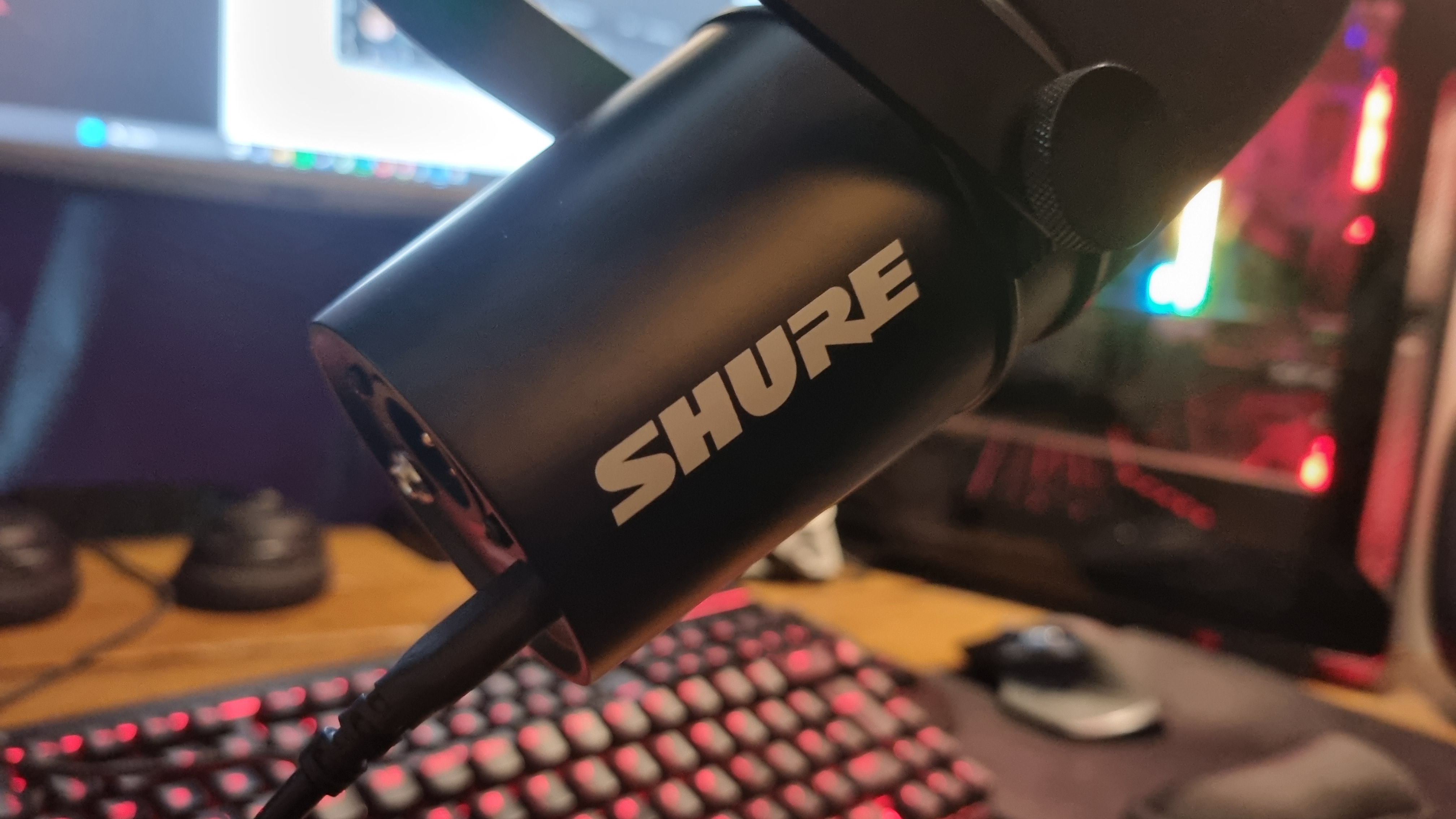
Type: Dynamic
Polar pattern: Unidirectional (cardioid)
Connectivity: USB Type-C/XLR
Recording sample rate: 16 or 24-bit, 44.1 or 48 kHz
Frequency response: 50 Hz to 16,000 Hz
Features: Top-mounted RGB light strip w/ touch controls, Motiv mix software with auto levelling, noise reduction, plosive reduction
Price: $279 | £269
That being said, given the MV6 has properly introduced Shure into the world of USB gaming microphones, the MV7+ now strikes as something more purposeful. This is a podcast and creator microphone through and through, with none of the MV6's gamer-friendly green accents. It's a subtle, handsome looking device, designed to look professional on a stream or in a recording studio.
Not that it doesn't have a certain RBG-lit charm of its own. The top-mounted light strip can be adjusted to a variety of colours, used as a gain indicator, or set to a subtle pulsing effect should you so wish. All of this is done through Shure's Motive Mix software, which instantly detects the mic via USB and activates all the software bells and whistles by default.
Ordinarily, I'd be against audio software leaping in and turning all the settings on before I'd had a chance to fiddle with them. Still, after my experiences reviewing the MV6, I already knew Shure's software was very good at finding a great default sound all by itself. So I booted up Audacity, and recorded a vocal test clip.
This is my first recording, out of the box, with absolutely no tweaking of the settings.
I am an interminable fiddler, particularly when it comes to audio. I'll spend hours tweaking EQ's, stacking VST plugins, and shaping sound backwards and forwards until I end up chasing my own tail and resigning to whatever Frankenstein's monster of a mix I've come up with. And listening to that first result, with zero tweaking on my part? I really don't think it needs much else.
It captures exactly the sort of vocal you'll be looking for if you want a studio-style sound, without any of the headache-inducing back and forth with the audio settings.
Enabled by default is Auto Gain Levelling, which ensures the volume stays consistent, along with a Real-time Denoiser (noise reduction, for the rest of us). I found it a little over-aggressive on the MV6, but the MV7+ has much less of an issue picking up any background noise to be stamped on in the first place. There's also a Digital Popper Stopper to minimise plosives, which are unwanted distortions to percussive vocal noises like "puhs" and "buhs". Something, in fact, that the OG MV7 was quite prone to.
Not only is there a digital effect here to minimise it, but that longer foam tip creates a bit more distance between your mouth and the microphone itself. Basically, the plosives are gone, and that's about the only thing I'd really criticise the MV7 for.
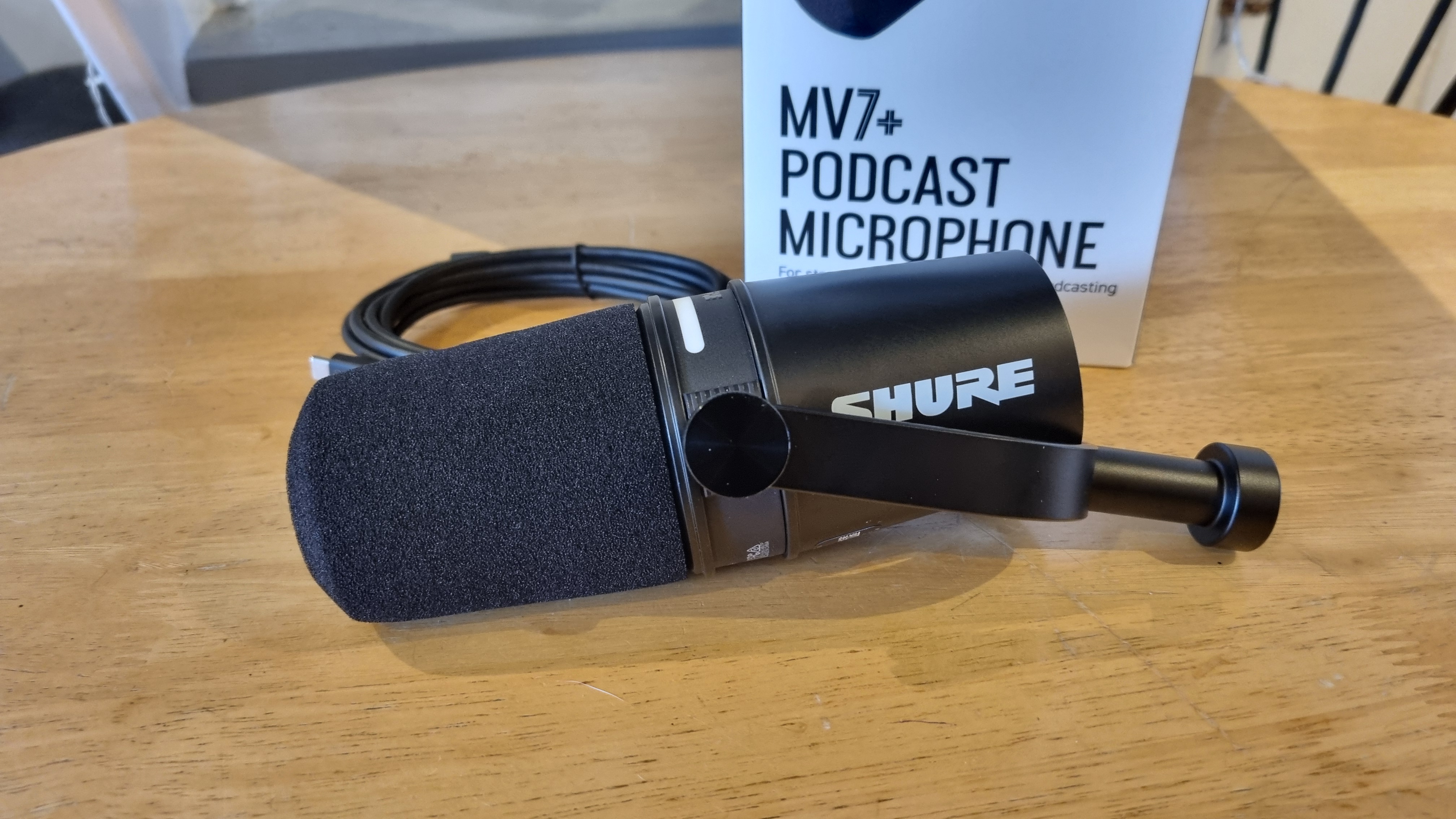
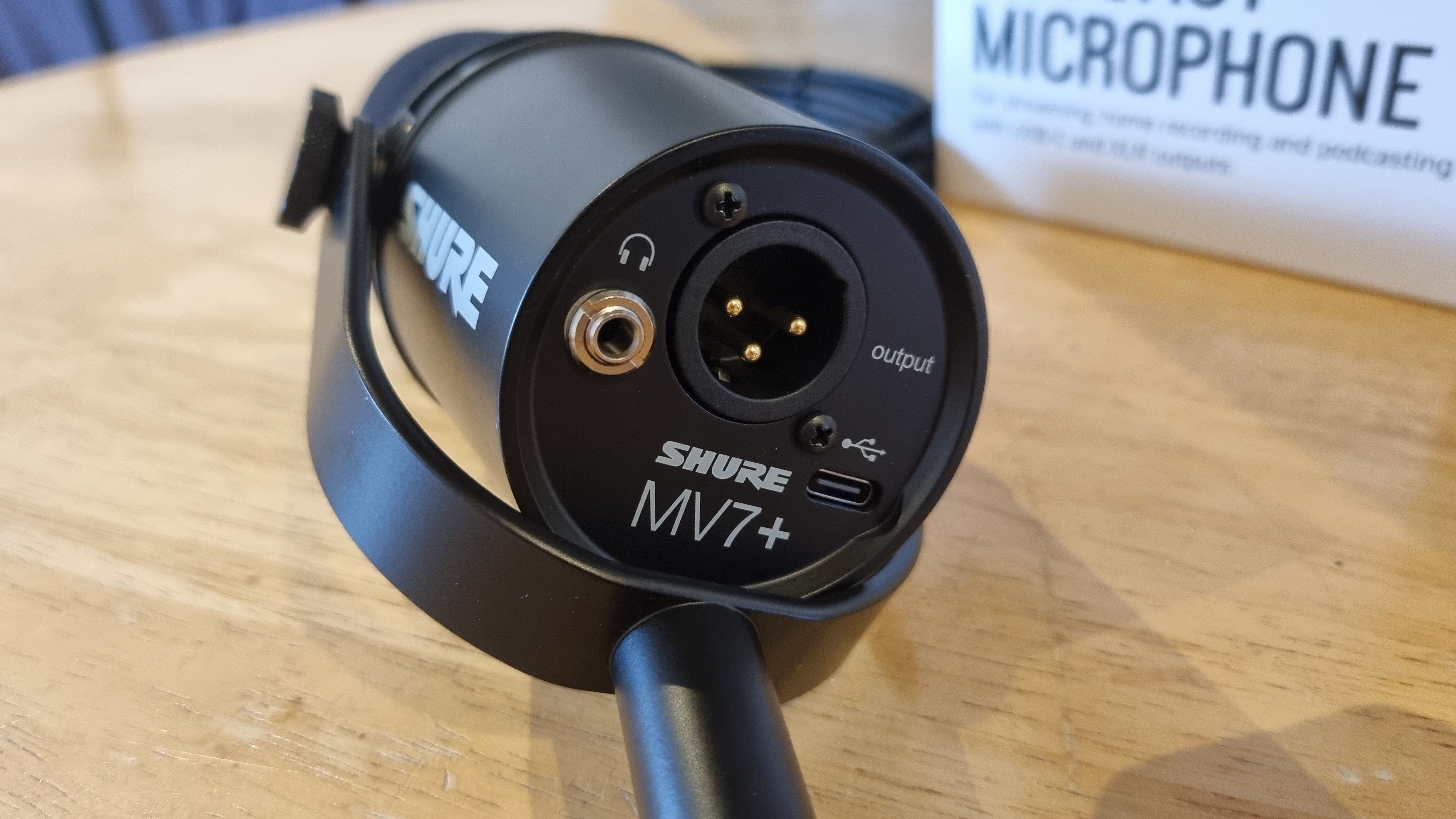
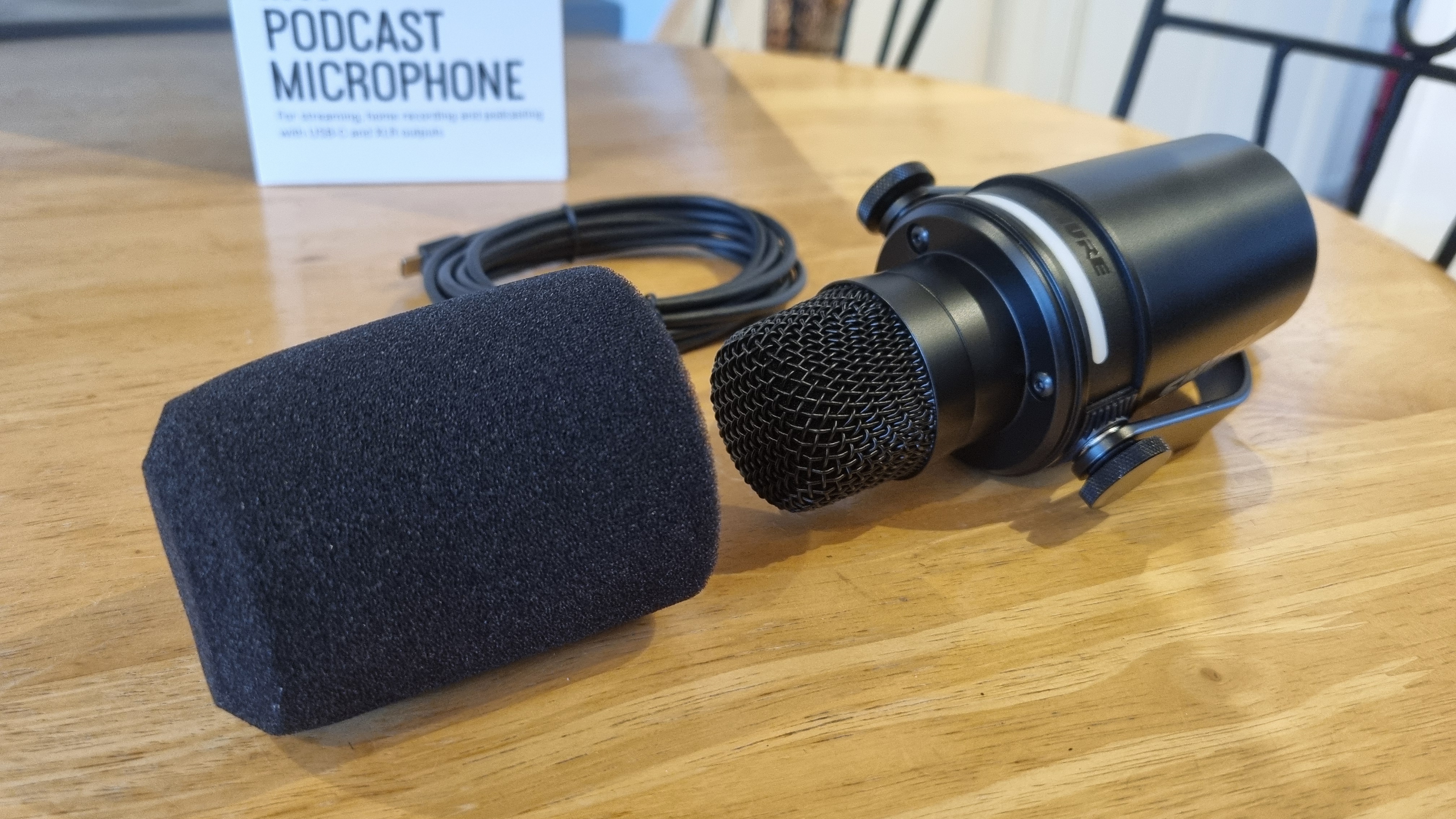
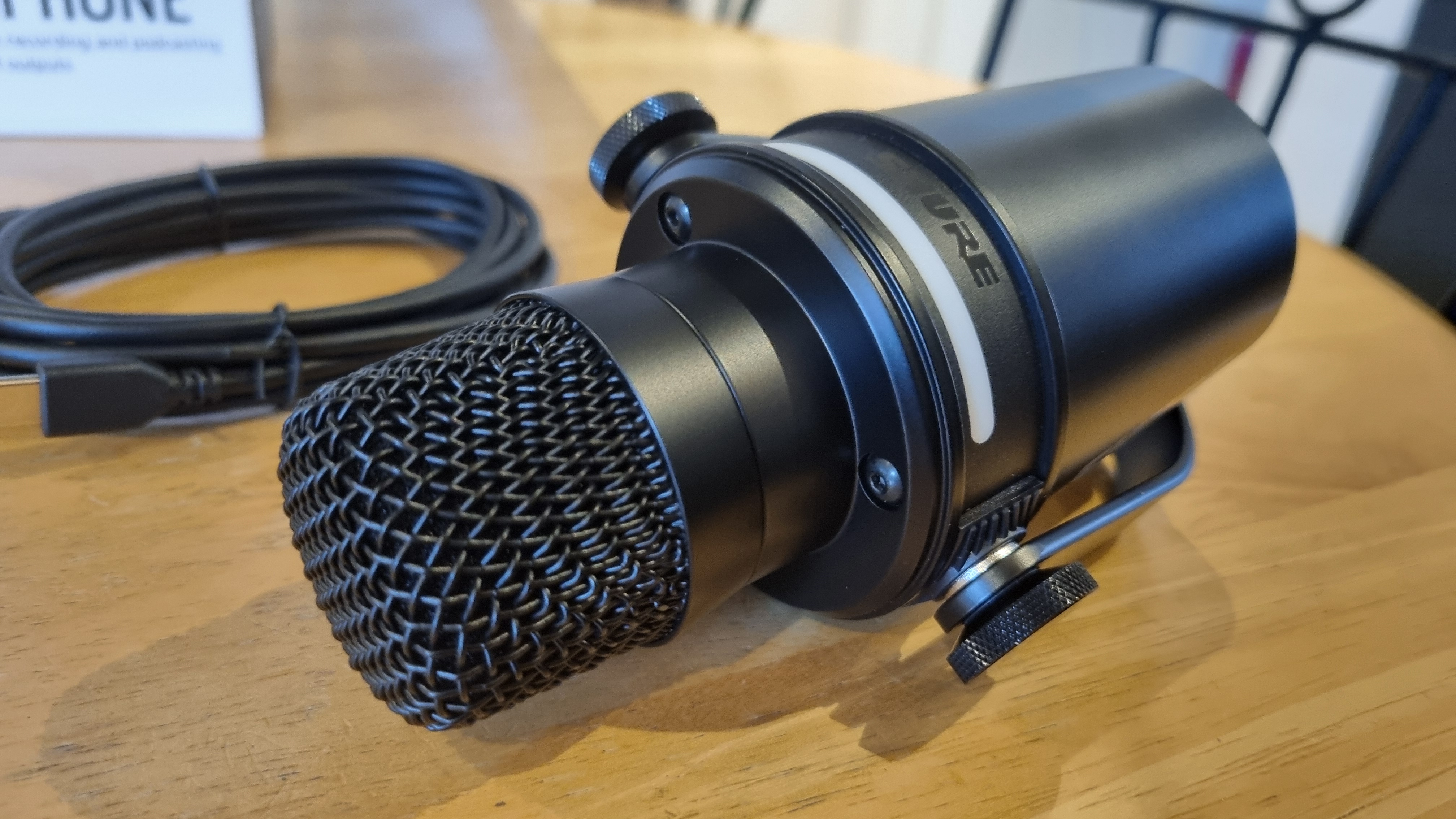
That, and the fact it didn't come with a stand by default, which is also the case here. You can include a desktop unit for an extra $10, but really what the MV7+ is designed for is to be mounted to a boom arm and brought up close, which is how I recorded the clip above. If you watch professionally produced podcasts, or even streamers with a bit of budget to spare, you'll notice that they'll often have a really good microphone right up in their faces to capture the richest sounding audio—and that's exactly where the MV7+ likes to be.
What this mic is, at its core, is an improvement on a classic.
Except it's just, well, better at it than anything else I could name south of $500—with the exception of one. That's the Shure SM7db, available for $499, which is the latest version of a mic that, over the years, has become one of the default recommendations for studio-grade vocal capture.
I'm not going to say the Shure MV7+ is better than the Shure SM7db, because it isn't. But it captures a genuinely comparable audio quality, with a similarly rich tone and crispy highlights, for near-enough half the price. And that, if you ask me, is a pretty impressive trick.
You can also use the included XLR connection to drive the MV7+ via a separate mixer, or plug it right into a suitably-powered console—but given the results here with a USB connection, I'd say most will never need to. Still, one of the best things about the MV7 was its flexibility, and it's still here in spades.
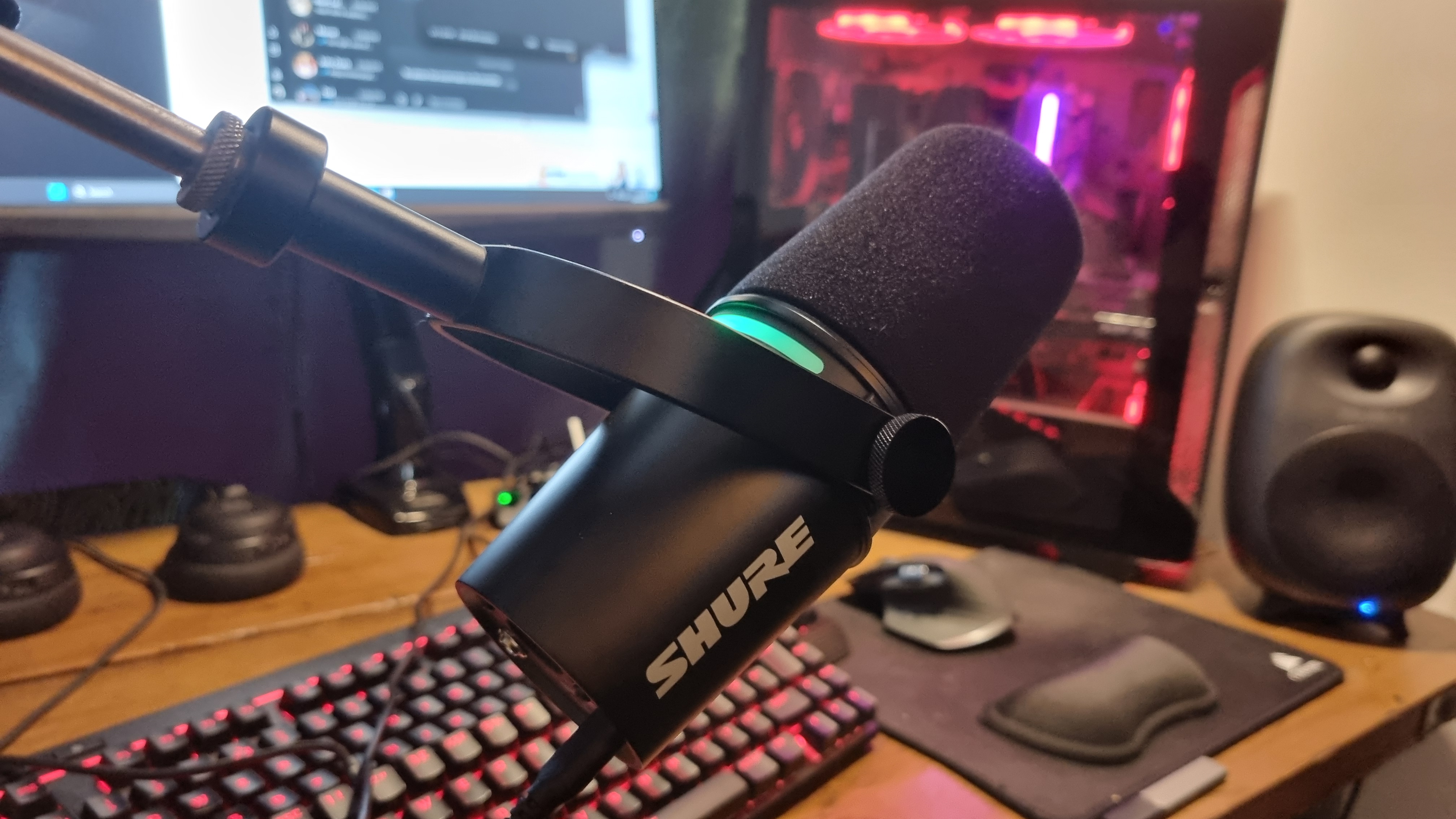
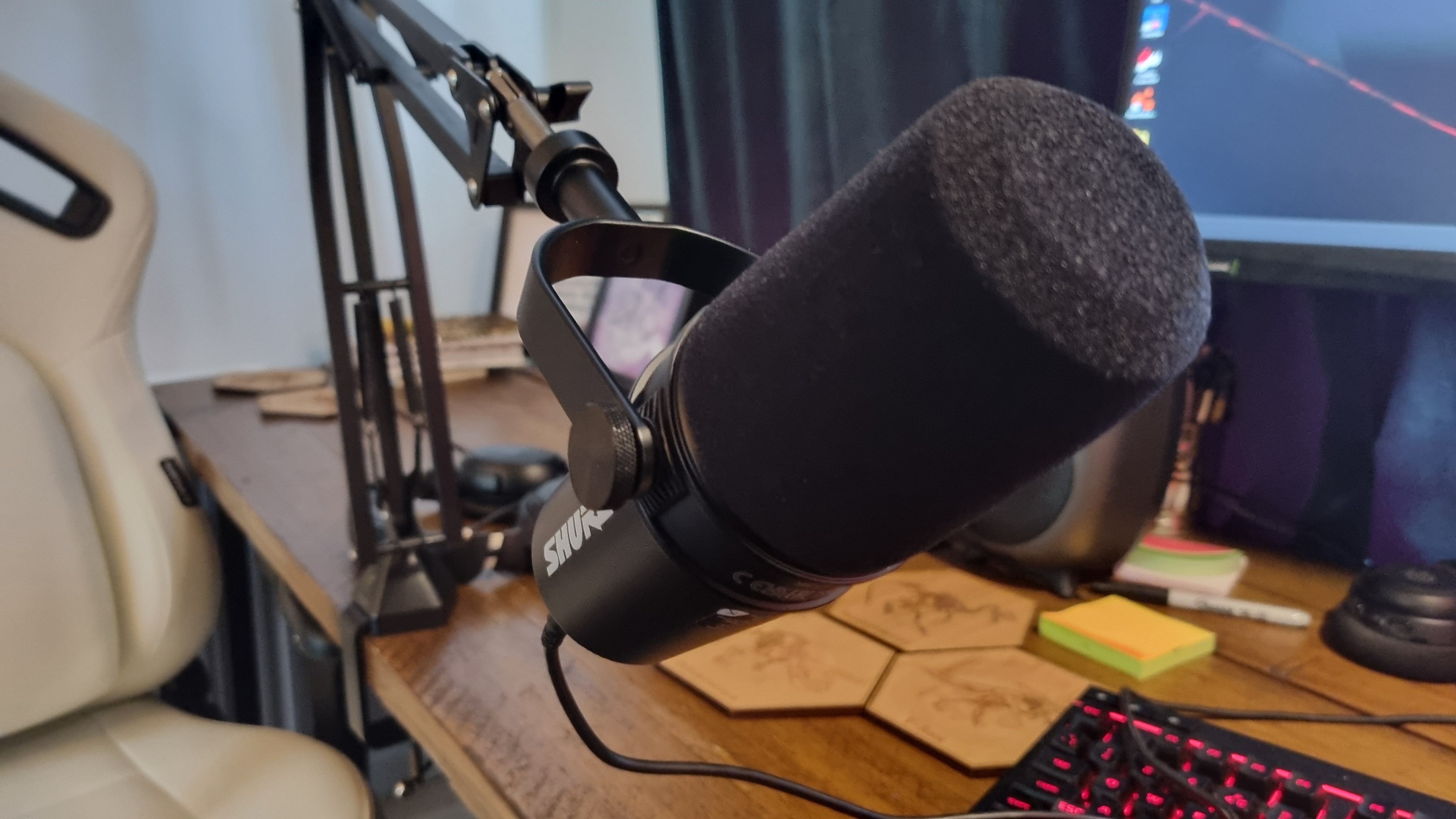
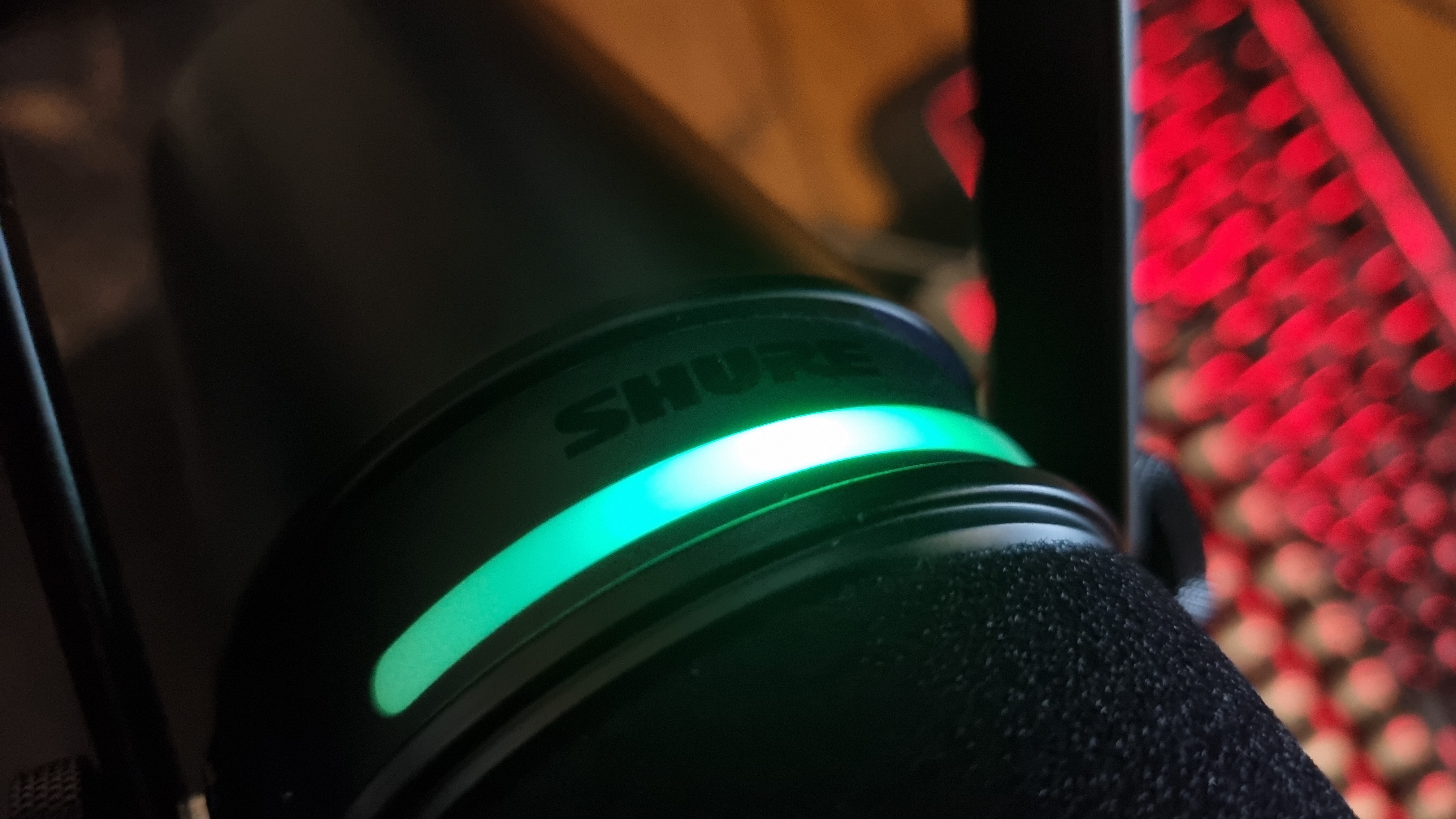
What this mic is, at its core, is an improvement on a classic. It's not revolutionary, or game-changing, because the game didn't really need to be changed. All Shure needed to do was fix the MV7's plosive problem, sharpen up the software suite, and double down on all the things that made that microphone brilliant. And that's exactly what it's done.
✅ You want to take your audio to new heights: The MV7+ makes achieving studio-grade vocal audio easy, and that's no mean feat.
✅ If you want something that'll last: Shure microphones are somewhat legendary for their resilience. Having handled more than a few, the SM7+ feels like it continues that tradition.
❌ You don't need top-end audio chops: The cheaper MV6 is more than capable of satisfying most gamers needs—but if you want to step it up to the next level, the MV7+ has you covered.
Would I recommend the MV7+ as the best microphone for gamers, full stop? Nope, that'd still be the MV6, by virtue of the fact that most won't want to get a substantial mic right in front of them to capture great audio. And the MV7+, while still capable of being used from a desktop position, isn't making the most of its strengths there. The MV6 is cheaper, less obtrusive, and doesn't need an arm to show it off at its best.
But if you want to elevate your audio to the next level, get serious about streaming, or record a podcast that sounds like you were sitting in a studio rather than your spare room, this is the microphone to buy. It makes studio-quality sound easy to achieve, looks good doing it, and will likely last a lifetime.
My MV7's have been dropped down stairs, thrown in the back of vans, drenched in beer and banged against walls. They still work as brilliantly as the day I got them out the box, and there's nothing about the build quality of the MV7+ that suggests anything's changed. Shure gear is known for its reliability, and this seems like yet another product destined to keep going, and going.
Yes, $279 is a lot of money for a mic. But given the results here, if you care about your audio, I'd say it was actually a reasonable price of entry. The MV6 might have the desktop audio chops covered, but if you want to take things to the next level, the MV7+ is where you want to be.







